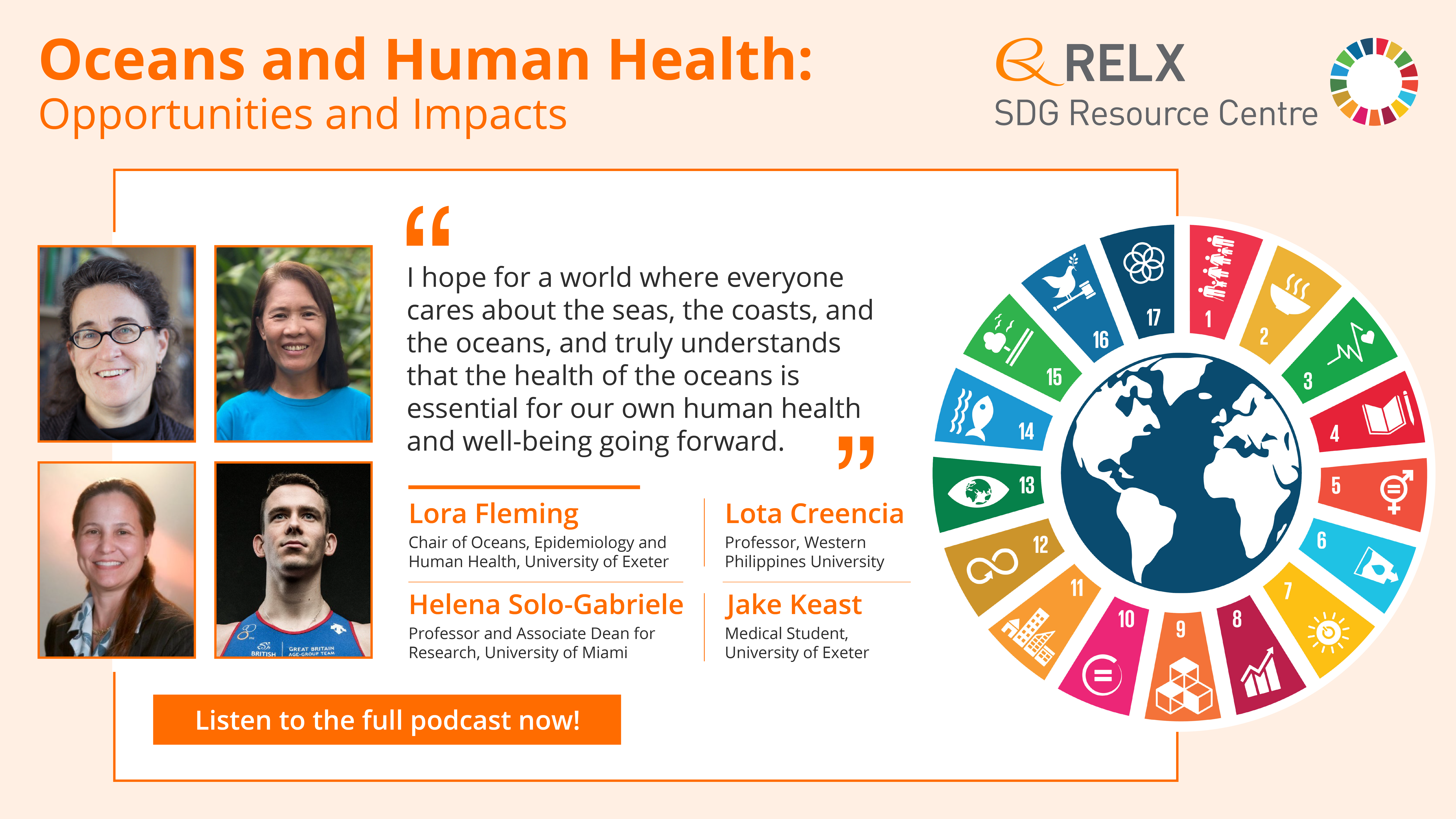This review supports SDG 3 as despite available antiviral therapy, hepatitis C virus (HCV) remains a global health burden and a prophylactic vaccine would help to eliminate the risk to develop chronic liver diseases. This paper uses data to draw a simplified model of virus entry, which highlights gaps in our current knowledge that warrant further research to fully understand this process at the atomic level.
In this episode of the “World We Want” podcast series, the editors of the new book Oceans and Human Health: Opportunities and Impacts talk to Márcia Balisciano about about the fascinating connections between the ocean and human health, spanning from wellbeing and mental health, to medicinal resources, plastics, food and nutrition, and the health risks of polluted oceans.
World Oceans day is celebrated every year on June 8th and this year the theme is "Planet Ocean: tides are changing". Elsevier is proud to share this special collection of impactful and freely accessible journal articles and book chapters in support of this important event.
The authors explore automatic and early detection methods for Alzheimer’s disease (AD) using deep learning techniques in order to improve the speed and accessibility of current testing methods. They propose a deep transfer learning model as a new approach for accurately detecting categories of Alzheimer's disease. The research serves SDG 3's aim in highlighing and seeking better treatment for AD, an increasingly serious global public health issue.
Tuberculosis is often reported in people with HIV. In this secondary post-hoc analysis of the A5274 REMEMBER clinical trial, the authors identified that people with HIV and moderate-to-severe anaemia had a higher incidence of TB than those with HIV who did not have anaemia. Addressing two key diseeases listed in SDG 3.3 (HIV and TB), the authors call for close monitoring of people with HIV and anaemia.
This study underscores a novel mechanism(s) underlying HIV-1 Tat-mediated ferroptosis and microglial activation involving miR-204–ACSL4 signaling.
SCFA contribute to the glutamate-glutamine shuttle by acting on glutamine synthetase. Long-term SCFA diet alleviates cognitive and spatial memory defeat in APP/PS1 mice. Long-term SCFA diet reduces Aβ deposition and abnormal phosphorylation of tau. SCFA promote astrocyte-neuron metabolic coupling to reduce oxidative damage.
In this study, a novel reporter substrate named C8CF3-coumarin was synthesized and then characterized, an assay protocol was developed to identify small molecular activators of PLCγ enzymes, and a proof-of-principle high throughput screen was conducted using PLCγ2 and the LOPAC1280 library. These studies showed that C8CF3-coumarin could indeed monitor PLCγ enzyme activity and identify potential small molecule activators from a screen. The identification of such small molecule PLCγ2 activators would be of great utility to the Alzheimer's disease research community by serving as both chemical probes to study the modulation of PLCγ2 and as potential therapeutic agents.
Elsevier,
Promoting Desired Lifestyles Among Adults with Severe Autism and Intellectual Disabilities
Person Centered Applications of Behavior Analysis
2023, Pages 275-293
This content aligns with Goal 3: Good Health and Wellbeing and Goal 10: Reduced Inequalities by stressing the importance of human service staff treating adults with severe disabilities with dignity.
Elsevier,
Promoting Desired Lifestyles Among Adults with Severe Autism and Intellectual Disabilities
Person Centered Applications of Behavior Analysis
2023, Pages 139-163
This content aligns with Goal 3: Good Health and Wellbeing and Goal 10: Reduced Inequalities by providing specific aspects of agency supports and services in accordance with identified preferences of adults with severe disabilities.




